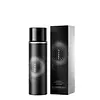What's inside
What's inside
 Key Ingredients
Key Ingredients

 Benefits
Benefits

 Concerns
Concerns

 Ingredients Side-by-side
Ingredients Side-by-side

Water
Skin ConditioningPhenoxyethanol
PreservativeVp/Va Copolymer
Niacinamide
SmoothingPropylene Glycol
HumectantPolyurethane-10
Butylene Glycol
HumectantPanthenol
Skin ConditioningEctoin
Skin ConditioningRosa Damascena Flower Water
MaskingAcrylates/Lauryl Acrylate/Stearyl Acrylate/Ethylamine Oxide Methacrylate Copolymer
Ceramide AP
Skin Conditioning1,2-Hexanediol
Skin ConditioningHydroxyacetophenone
AntioxidantEthylhexylglycerin
Skin ConditioningPEG-40 Hydrogenated Castor Oil
EmulsifyingPPG-26-Buteth-26
Skin ConditioningDisodium EDTA
Parfum
MaskingWater, Phenoxyethanol, Vp/Va Copolymer, Niacinamide, Propylene Glycol, Polyurethane-10, Butylene Glycol, Panthenol, Ectoin, Rosa Damascena Flower Water, Acrylates/Lauryl Acrylate/Stearyl Acrylate/Ethylamine Oxide Methacrylate Copolymer, Ceramide AP, 1,2-Hexanediol, Hydroxyacetophenone, Ethylhexylglycerin, PEG-40 Hydrogenated Castor Oil, PPG-26-Buteth-26, Disodium EDTA, Parfum
Water
Skin ConditioningVinyl Dimethicone/Methicone Silsesquioxane Crosspolymer
Rosa Damascena Flower Water
MaskingButylene Glycol
HumectantHyaluronic Acid
HumectantFerulic Acid
AntimicrobialSodium Hyaluronate
HumectantPanthenol
Skin ConditioningPhenoxyethanol
PreservativeEctoin
Skin ConditioningHydroxyacetophenone
AntioxidantPEG-11 Methyl Ether Dimethicone
EmulsifyingLactobacillus Ferment
Skin ConditioningLactobacillus/Ganoderma Lucidum Extract/Lentinus Edodes Extract Ferment Filtrate
Skin ConditioningSaccharomyces Ferment
Skin ConditioningDisodium EDTA
Hectorite
AbsorbentBis-Ethoxydiglycol Cyclohexane 1,4-Dicarboxylate
EmollientLinalool
PerfumingHexyl Cinnamal
PerfumingCitric Acid
BufferingMethyl Diisopropyl Propionamide
MaskingAroma
Caprylhydroxamic Acid
1,2-Hexanediol
Skin ConditioningWater, Vinyl Dimethicone/Methicone Silsesquioxane Crosspolymer, Rosa Damascena Flower Water, Butylene Glycol, Hyaluronic Acid, Ferulic Acid, Sodium Hyaluronate, Panthenol, Phenoxyethanol, Ectoin, Hydroxyacetophenone, PEG-11 Methyl Ether Dimethicone, Lactobacillus Ferment, Lactobacillus/Ganoderma Lucidum Extract/Lentinus Edodes Extract Ferment Filtrate, Saccharomyces Ferment, Disodium EDTA, Hectorite, Bis-Ethoxydiglycol Cyclohexane 1,4-Dicarboxylate, Linalool, Hexyl Cinnamal, Citric Acid, Methyl Diisopropyl Propionamide, Aroma, Caprylhydroxamic Acid, 1,2-Hexanediol
 Reviews
Reviews

Ingredients Explained
These ingredients are found in both products.
Ingredients higher up in an ingredient list are typically present in a larger amount.
1,2-Hexanediol is a synthetic liquid and another multi-functional powerhouse.
It is a:
- Humectant, drawing moisture into the skin
- Emollient, helping to soften skin
- Solvent, dispersing and stabilizing formulas
- Preservative booster, enhancing the antimicrobial activity of other preservatives
Butylene Glycol (or BG) is used within cosmetic products for a few different reasons:
Overall, Butylene Glycol is a safe and well-rounded ingredient that works well with other ingredients.
Though this ingredient works well with most skin types, some people with sensitive skin may experience a reaction such as allergic rashes, closed comedones, or itchiness.
Learn more about Butylene GlycolDisodium EDTA plays a role in making products more stable by aiding other preservatives.
It is a chelating agent, meaning it neutralizes metal ions that may be found in a product.
Disodium EDTA is a salt of edetic acid and is found to be safe in cosmetic ingredients.
Learn more about Disodium EDTAEctoin is a compound found naturally in some species of bacteria. It can be synthetically created for skincare use.
This ingredient is an osmolyte; Osmolytes help organisms survive osmotic shock (it protects them from extreme conditions). It does this by influencing the properties of biological fluids within cells.
When applied to the skin, ectoin helps bind water molecules to protect our skin. The water forms a sort of armor for the parts of our skin cells, enzymes, proteins, and more.
Besides this, ectoin has many uses in skincare:
A study from 2004 found ectoin to counteract the damage from UV-A exposure at different cell levels. It has also been shown to protect skin against both UV-A, UV-B rays, infrared light, and visible light.
Studies show ectoin to have dual-action pollution protection: first, it protects our skin from further pollution damage. Second, it helps repair damage from pollution.
In fact, ectoin has been shown to help with:
Fun fact: In the EU, ectoin is used in inhalation medication as an anti-pollution ingredient.
Ectoin is a highly stable ingredient. It has a wide pH range of 1-9. Light, oxygen, and temperature do not affect this ingredient.
Learn more about EctoinHydroxyacetophenone is antioxidant with skin conditioning and soothing properties. It also boosts the efficiency of preservatives.
This ingredient is not irritating or sensitizing.
Panthenol is a common ingredient that helps hydrate and soothe the skin. It is found naturally in our skin and hair.
There are two forms of panthenol: D and L.
D-panthenol is also known as dexpanthenol. Most cosmetics use dexpanthenol or a mixture of D and L-panthenol.
Panthenol is famous due to its ability to go deeper into the skin's layers. Using this ingredient has numerous pros (and no cons):
Like hyaluronic acid, panthenol is a humectant. Humectants are able to bind and hold large amounts of water to keep skin hydrated.
This ingredient works well for wound healing. It works by increasing tissue in the wound and helps close open wounds.
Once oxidized, panthenol converts to pantothenic acid. Panthothenic acid is found in all living cells.
This ingredient is also referred to as pro-vitamin B5.
Learn more about PanthenolPhenoxyethanol is a preservative that has germicide, antimicrobial, and aromatic properties. Studies show that phenoxyethanol can prevent microbial growth. By itself, it has a scent that is similar to that of a rose.
It's often used in formulations along with Caprylyl Glycol to preserve the shelf life of products.
Rosa Damascena Flower Water comes from the Damask rose. It is a dilluted version of the Rose Essential oil.
The Damask Roses' petals have antioxidant, antimicrobial, and fragrance compounds. Though antioxidants are great for soothing skin, the fragrance compounds can irritate it.
Water. It's the most common cosmetic ingredient of all. You'll usually see it at the top of ingredient lists, meaning that it makes up the largest part of the product.
So why is it so popular? Water most often acts as a solvent - this means that it helps dissolve other ingredients into the formulation.
You'll also recognize water as that liquid we all need to stay alive. If you see this, drink a glass of water. Stay hydrated!
Learn more about Water